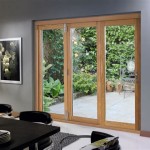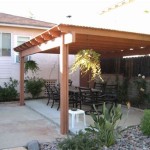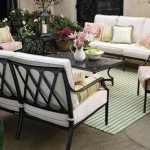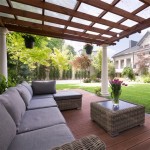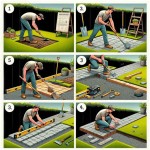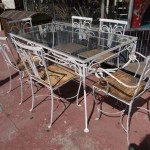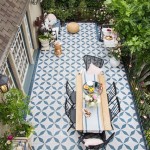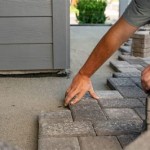What Is The Best Material For An Outdoor Patio?
Selecting the optimal material for an outdoor patio is a crucial decision that impacts both the aesthetic appeal and the longevity of the outdoor space. The best material is not universally defined, as it hinges on a variety of factors, including budgetary constraints, climate considerations, maintenance preferences, and desired design aesthetics. Each material presents a unique combination of advantages and disadvantages that must be carefully weighed against individual needs and priorities.
This article will explore several popular patio materials, examining their strengths, weaknesses, and suitability for different applications. The goal is to provide a comprehensive overview that empowers informed decision-making in the selection process.
Key Considerations When Choosing Patio Materials
Before delving into specific materials, it is essential to establish the key factors influencing the choice. These factors serve as a framework for evaluating the suitability of each option.
Durability and Longevity: The chosen material should withstand the rigors of outdoor exposure, including fluctuating temperatures, precipitation, and sunlight. Resistance to cracking, fading, staining, and insect infestation are crucial considerations.
Climate Suitability: The local climate significantly impacts material performance. In regions with harsh winters, materials must be freeze-thaw resistant to prevent cracking and degradation. In hot, sunny climates, heat absorption and fading resistance are paramount.
Maintenance Requirements: Different materials require varying levels of maintenance. Some require frequent cleaning and sealing, while others are virtually maintenance-free. Consider the time and effort one is willing to invest in upkeep.
Cost: The initial cost of materials and installation can vary dramatically. It is essential to establish a budget and explore options that fall within that range. Long-term cost considerations, such as maintenance and potential repairs, should also be factored in.
Aesthetics: The chosen material should complement the surrounding landscape and architectural style of the home. Consider the color, texture, and overall appearance of the material and how it integrates with the existing environment.
Installation Complexity: Some materials are easier to install than others. Consider whether professional installation is required or if a DIY approach is feasible. The complexity of installation can impact the overall cost and timeline of the project.
Sustainability: For environmentally conscious individuals, the sustainability of the material is a key consideration. Options made from recycled materials or sourced from sustainable sources are preferable.
Popular Patio Material Options
The following sections provide detailed information on several commonly used patio materials, highlighting their key characteristics and suitability for different applications.
Concrete: Concrete is a versatile and durable material that offers a wide range of design possibilities. It can be poured in place, precast into pavers, or stamped with various patterns and textures. Concrete is relatively affordable and requires minimal maintenance. However, it can be susceptible to cracking in extreme temperatures and may require sealing to prevent staining.
The primary advantage of concrete is its adaptability. It can be stained in a wide array of colors, allowing for customization to match any aesthetic. Stamped concrete offers the look of more expensive materials like natural stone at a fraction of the cost. Furthermore, concrete is a relatively strong material, capable of withstanding heavy foot traffic and furniture.
Conversely, concrete can be prone to cracking, especially in climates with significant freeze-thaw cycles. Proper installation and reinforcement are crucial to mitigate this risk. While generally low-maintenance, concrete can stain if spills are not cleaned promptly, and periodic sealing is recommended to maintain its appearance and protect it from the elements.
Brick: Brick patios offer a classic and timeless aesthetic. Brick is a durable and long-lasting material that can withstand heavy foot traffic and extreme weather conditions. It is also relatively low-maintenance, requiring only occasional cleaning. However, brick can be more expensive than concrete and may require professional installation.
The inherent warmth and character of brick make it a popular choice for traditional and cottage-style homes. Brick is available in a variety of colors and textures, allowing for customization to suit individual preferences. It is also a relatively slip-resistant material, making it a safe option for areas prone to moisture.
However, brick can be more expensive than concrete, and installation can be more labor-intensive. The mortar joints between bricks can also be susceptible to weeds and cracking over time, requiring occasional maintenance. In addition, brick can absorb heat in sunny climates, making it uncomfortable to walk on barefoot.
Natural Stone: Natural stone patios offer a unique and elegant look. Stone is a durable and long-lasting material that can withstand extreme weather conditions. It is also relatively low-maintenance, requiring only occasional cleaning. However, natural stone can be more expensive than other materials and may require professional installation.
The natural variations in color and texture make each stone patio unique. Stone is available in a wide range of types, including flagstone, slate, limestone, and granite, each with its own distinct characteristics. It is also a highly durable material that can withstand heavy foot traffic and extreme weather conditions.
However, natural stone can be significantly more expensive than other patio materials. Installation can also be more complex, requiring skilled labor and specialized equipment. The uneven surface of some types of stone can also pose a tripping hazard, and certain types of stone may be porous and require sealing to prevent staining.
Pavers: Pavers are manufactured concrete or clay units that are designed to interlock, creating a durable and attractive patio surface. Pavers are available in a wide range of colors, shapes, and sizes, offering numerous design possibilities. They are also relatively easy to install and maintain.
The interlocking design of pavers provides a stable and durable surface that is resistant to cracking and shifting. Pavers are also available in a variety of textures and finishes, allowing for customization to match any aesthetic. They are also relatively easy to repair; individual pavers can be replaced if damaged.
However, pavers can be more expensive than poured concrete. The joints between pavers can also be susceptible to weeds and shifting over time, requiring occasional maintenance. Proper installation is crucial to ensure a level and stable surface.
Wood: Wood decks and patios offer a warm and inviting aesthetic. Wood is a natural and renewable resource that can be stained or painted to match any color scheme. However, wood requires regular maintenance to prevent rot, insect infestation, and fading. It is also susceptible to warping and cracking in extreme weather conditions.
The natural beauty of wood makes it a popular choice for outdoor spaces. Wood decks and patios can be customized to fit any size or shape. They are also relatively comfortable to walk on barefoot and can provide a cooler surface than concrete or stone in hot climates.
However, wood requires regular maintenance, including cleaning, staining, and sealing, to prevent rot and insect infestation. Wood is also susceptible to warping and cracking in extreme weather conditions. Certain types of wood, such as redwood and cedar, are more durable and resistant to rot than others, but they are also more expensive.
Composite Decking: Composite decking is a manufactured material made from a combination of wood fibers and plastic. It offers the look of wood without the maintenance requirements. Composite decking is resistant to rot, insect infestation, and fading. It is also available in a variety of colors and textures.
The low-maintenance nature of composite decking makes it an attractive option for homeowners who want the look of wood without the hassle of regular staining and sealing. Composite decking is also resistant to rot, insect infestation, and fading, making it a durable and long-lasting material.
However, composite decking can be more expensive than wood. It can also be susceptible to scratching and staining, and it may not have the same natural look and feel as real wood. In addition, some types of composite decking can absorb heat in sunny climates, making them uncomfortable to walk on barefoot.
Material Considerations Based on Climate
Climate plays a significant role in determining the suitability of different patio materials. The following scenarios outline ideal materials for various climate types:
Cold Climates (Freeze-Thaw Cycles): In regions experiencing frequent freeze-thaw cycles, materials must be highly resistant to cracking and degradation. Concrete pavers and natural stone, such as granite and quartzite, are excellent choices due to their inherent durability. Proper installation with adequate drainage is crucial to prevent water from accumulating and freezing beneath the patio surface.
Hot and Sunny Climates: In areas with intense sunlight and high temperatures, materials should be heat-reflective and resistant to fading. Light-colored concrete pavers, natural stone such as limestone, or composite decking can help minimize heat absorption and maintain a comfortable surface temperature. UV-resistant sealants can also be applied to protect materials from fading.
Wet Climates: In regions with frequent rainfall, materials should be slip-resistant and resistant to mold and mildew growth. Porous materials like wood require regular sealing to prevent water damage. Concrete pavers with a textured surface or natural stone with a naturally rough texture are good choices for providing traction. Adequate drainage is essential to prevent water from pooling on the patio surface.
Mild Climates: In regions with mild temperatures and moderate rainfall, a wider range of materials can be considered. Concrete, brick, natural stone, pavers, wood, and composite decking are all viable options. The choice will primarily depend on aesthetic preferences and budgetary considerations.

Which Is The Best Material For Outdoor Furniture

2024 Best Material For Outdoor Furniture Fabric Patio Homeadvisor

What S The Best Material For Outdoor Furniture Calgary

How To Pick The Best Material For An Outdoor Rug Living Spaces

Best Material For Outdoor Furniture Covers Oakville Home Leisure

The 5 Best And Worst Flooring For An Outdoor Patio

14 Outdoor Flooring Options Ultimate Guide

How To Protect Your Outdoor Furniture Living Spaces

What Is The Best Fabric For Outdoor Cushions

How To Choose The Best Material For Outdoor Furniture
Related Posts

